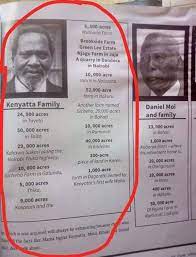But what do Bukusu anthropologists say about lineage of Bukusu. How did we know Mundu left Esibakala in 885AD? Or we were chased out of fertile highlands of Silikwa in dispersal wars of 950-1100 AD? Or that Mukite wa Nameme was brought forth in 1790? Or that Mango faced the knife in 1800? How can we know that Mutonyi wa Nabukelembe met his death in 1890 just as he predicted?
Welcome to the Mathematics of Bukusu culture. Let’s calculate the years back into time, perhaps you can get to know the family tree of your clan!
This Bukusu chronological analysis has been motivated by Balovera Ongacho from Nabakholo, Kakamega County who asked me for help in establishing family tree of Abakwangwachi.
Credits: Work is based upon the works of Gunter, Were, Ogot and Makila passionate researchers for Western Kenya communities in the past century [See Ref list].
Basics of Bukusu lineage calculation
1. Bukusu is a pertanalistic society; linage follows the males in the clan. Baseni be kumuse point to presence of 7 degrees of descent that make up consanguineous relationship in Bukusu culture. From:
- A man (omundu)
- One’s child (omwana) to
- Omwichukhulu [grandson], to
- Sisoni [great grandson],
- Simiila [great-great grandson],
- Sisingukhu [great-great-great grandson], and
- Sisakha malalu [great-great-great-great grandson]
2. From Dr. Ogot’s approach, a generation averagely lasts in the time a man is born to the birth of his first surviving child, which is approximately 27 years. (although some use circumcision sets and age groups as reference points).
It is therefore right to argue that all the 7 degrees will account for 7generations totaling to 189 years which is about 2 centuries. That is approx. 200 years.
3. But then sisakha malalu is so weak in blood ties that often they are allowed to intermarry. It is not possible for sisala malalu to give a clear account of the life of Omundu (his first ancestor).
In fact Bukusu anthropologists believe that in preserving oral tradition, it will take the 200 years (7 generations) and another 200 years for serious historical gaps to occur. It means that in a span of 400 years, a person begins to get mixed in oral heritage.
For example, little is remembered about Mundu (descendant of Mubukusu) but it is generally known he had a family of his own and lived among other people.
Sioka, Malaba and Mukhobe
Sioka, Omulako, was a great Bukusu leader during the early migration days. After Walumoli died, Sioka assumed community leadership from Kukumayi up to Esilangilile.
Malaba and Mukhobe were two Bukusu ancestors known for good deeds. There were remembered on for innumerable years. Out of their good deeds, they came to be enjoined in Bukusu Holy Trinity, as subordinate gods to Khakaba himself; Wele Khakaba, Wele Mukhobe and Wele Malaba (or Mung’oma).
So, for Sioka’s relationship to fade with Mubukusu, it took around 200 years, for Malaba’s memory to fade it took another 200 years and the same for Mukhobe. In total, there are 6 centuries (about 600 years) between Mukhobe and Mubukusu.
Lineage of Bayemba Bakhayama
I could use my Bayitu lineage, but I am unable to trace beyond four generations. As I continue to dig up my ancestry, I find a ready example in the clan of Bayemba. I will rely on the exhaustive work of University of Lesotho-schooled Makila whose work was greatly shaped by counsel of reputable Bukusu elders like;
- The Late Pascal Nabwana of Kimilili,
- William Wanyonyi of Endebess,
- Nicodemus Nyaranga of Nasianda,
- Richard Sichangi of Ndalu and
- Peter Nasong’o of Kitale among others.
Bayemba Genealogy reveals 10 generations between Mukhobe and Wakoli, Makila’s great ancestor. Wakoli okhwa-Mukisu (already narrated under this blog) is the same who put up a well-planned resistance against Sir Fredrick Jackson of British Imperial Forces in what is popularly known as the Battle of Lumboka.
Wakoli who recently died at a ripe age in 1912 had been circumcised in 1888. Counting backwards, Wakoli should have been born about 300 years after Mukhobe and 900 years after Mubukusu. Allowing one generation between Mubukusu and his eldest son Masaaba, we have 27 years. And again, we give one generation between Masaaba and Mundu, that is, another 27 years.
So, if Wakoli was known to be born in 1866, Mubukusu must have appeared about 927 years earlier using 1866 as the year of reference. In the same way, Masaaba lived 954 years back and Mundu 981 years.
Now taking 1866 minus 981 years, gives A.D 885, the year that Mundu left his abode at Esibakala settling at Esirende. In the same way, we can now know that Masaaba, his son, settled in Embayi around A.D 912. In about 15 seasons later, disagreement in the house of Masaaba led to Mubukusu migrating to Silikwa highlands as Mukisu took a different direction. And the migration route was established till then came to settle in Western Kenya.
And that is how to calculate the Bukusu Lineage!
If you can trace your lineage in the clan, you can go back in time and know timelines of your great ancestors.
Lusimo: Ekitayi ya mukhosi [feasting is for one who serve]
Feasting deserves the one who labours. Enjoy to rest, after a year of hard work
Happy Holidays from Dimples Blog!
xxxxxxxxxxxxxxxxxxxxxxxxxxx










Comments